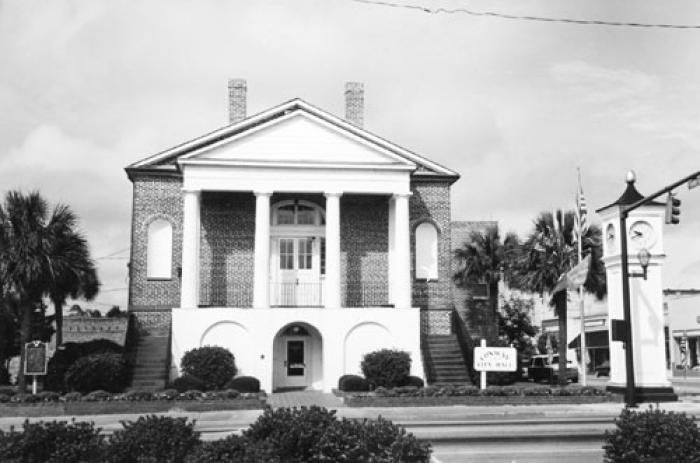Conway Downtown Historic District
National Register Listing
Street Address:
Portions of Elm St., Fourth Ave., Kingston St., Laurel St., Main St., Normal Alley, and Third Ave., Conway, SC (Horry County)
NRHP Nomination
NRHP Boundary Increase
Boundary Increase II & Additional Documentation
Record Number:
S10817726009
Description and Narrative:
The Conway Downtown Historic District is significant as the public, commercial, and social center of the city of Conway; as a collection of buildings associated with the commercial and governmental growth and development of Conway from ca. 1824 to 1969; and as a typical example of architectural and commercial development and evolution in a small southern coastal town in the 19th and 20th centuries. Commercial buildings constitute the majority of the district and many district contributors are one- or two-story vernacular commercial resources of brick or masonry construction. Most buildings are vernacular, but represented styles in the district include Mission Revival and various expressions of Modernism. The district represents an intact collection of 19th and 20th century examples of commercial and public architecture concentrated in downtown Conway. Many of the historic commercial buildings in downtown Conway were built shortly after an 1897 fire destroyed several downtown businesses. The new brick buildings which were constructed on Main Street from ca. 1900 to ca. 1910 became the core of the city’s business district, an area which grew still larger from ca. 1910 to ca. 1940. Rapid growth occurred from ca. 1890 to ca. 1930, largely due to the successful introduction of tobacco as a cash crop. As nearby Myrtle Beach expanded Horry County’s tourist economy after World War II, Conway’s infrastructure and built environment matured and evolved. This post-war development represents the growth the county experienced as it transitioned to a tourist economy from an agrarian one, providing jobs and opportunities for new businesses. Downtown Conway continued to be the primary area where local residents sought commercial goods and services until the opening of Conway Coastal Mall in 1969, which shifted the town’s commercial center to its northern edges. This new strip mall pulled many of downtown Conway’s commercial ventures into the suburbs and decentralized the business district, ending downtown’s time as Conway’s commercial epicenter. Listed in the National Register August 19, 1994; Boundary Increase I listed March 31, 2010; Boundary Increase II listed and Additional Documentation approved May 5, 2025.
Period of Significance:
circa 1824 – 1969
Level of Significance:
Local
Area of Significance:
Architecture;Commerce;Politics/Government
National Register Determination:
listed
Date of Certification:
August 19 1994
Date of Boundary Increase:
March 31 2010;May 5 2025
